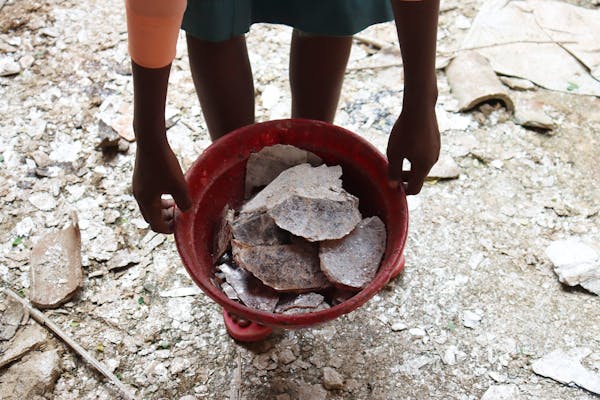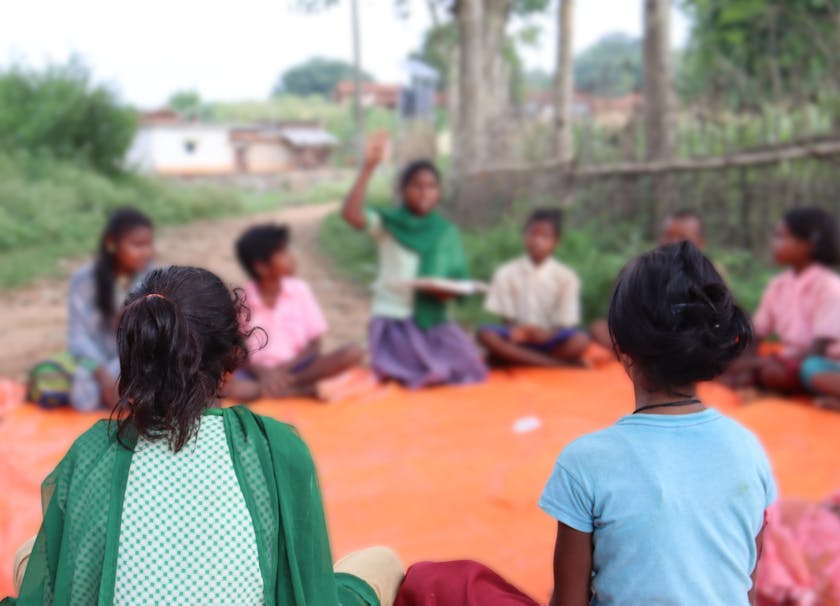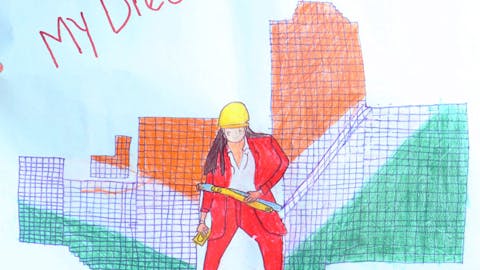Mica, essential to products like electronics, cosmetics, and paints, is widely found in Jharkhand, India. Despite a formal mining ban, poverty and lack of alternatives force families—often involving children—into hazardous, illegal mining. Children are exposed to high health and safety risks, and often drop out of school. We work to tackle child labour by fostering child protection mechanisms that enable children’s education, improve family incomes, and connect communities to social protection schemes. We advocate to formalise supply chains and establish minimum wages for adult mica miners.
Project
Stop child labour in the mica mining belt India

India is one of the largest producers of mica in the world
-

Ines del Real
Head of programmeChildren play a critical role in global sustainable development. Children should work in (school)books, not mines. Join us to eradicate child labour!
Background
Jharkhand in India accounts for nearly 25% of the world’s mica supply. There are a few legal mines, but most of the mica is mined illegally. Often by children under 14 years of age who collect mica scrap (Dhibra). Their parents are economically vulnerable which forces children to work to make ends meet.
Families in the mica belt depend solely on the mineral for their livelihood. Lack of an organised supply chain has led to labour exploitation and families get bare minimum wages. As a result, children are forced to work, and are out of school.
The working conditions are hazardous with children having to go down into dark pits and extricate mica. Lack of additional livelihood opportunities makes the families remain poor and vulnerable.
The dust that is released when mining mica affects the lungs. Many accidents happen in and around the pits. Debris is splashed around. The children often have little or no protection.
Our Goals
Our Approach
We work in districts of Koderma and Giridih in Jharkhand, India.
Children as Change Agents
Empowering children as change agents through children’s clubs where children learn to fight for their rights and advocate for changes.
Enabling Access to Education
Enrolling out-of-school children in formal learning, provision of bicycles, equipping schools with teaching material, establishing mobile libraries, teacher training and strengthening school management committees.
Additional Livelihood Opportunities
Skill building of parents for additional livelihood opportunities including linking parents to state-level employment mechanisms
Capacity building
Building capacities of child protection institutions and civil society networks to prevent and respond to child labour
Social security
Facilitating improved access to government social protection packages for children and their families

Our Results
- 320 children assumed the role of change agents and effectively presented their problems to duty bearers.
- 3,413 children gained access to digital and community libraries, fostering a culture of reading and improving learning outcomes across project villages.
- 164 adolescents completed vocational training in computer applications, tailoring, and beautician courses, offering alternatives to child labour.
- 1,829 families accessed social protection schemes to reduce economic dependency on mica collection.
Our partners
Implementing Partners
Funding Partners
International Labour Organization
The International Labour Organization is a United Nations agency whose mandate is to advance social and economic justice by setting international labour standards.
Mercedes Benz
Mercedes-Benz is a German luxury automotive brand known for its high-end vehicles, including sedans, SUVs, and more.





